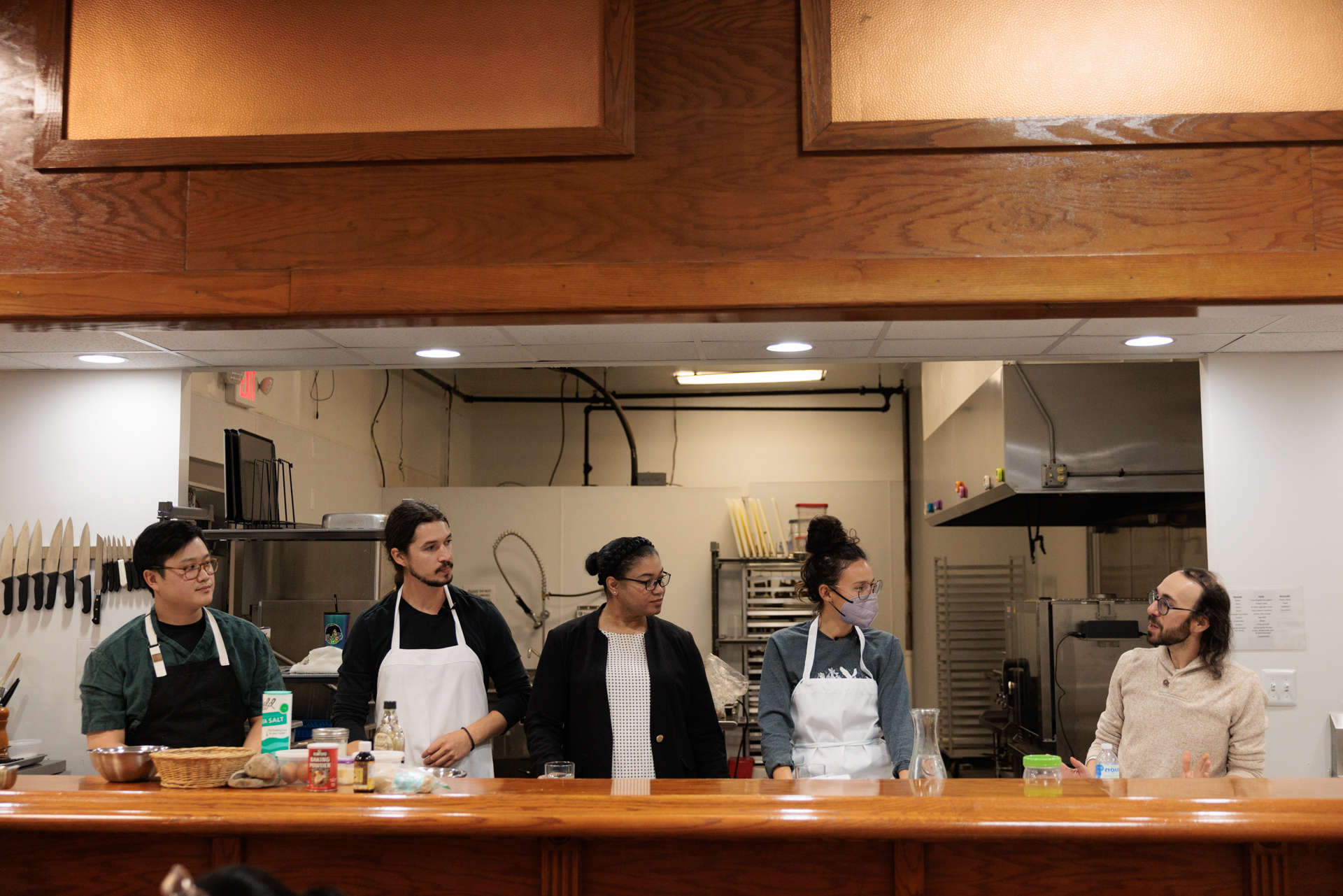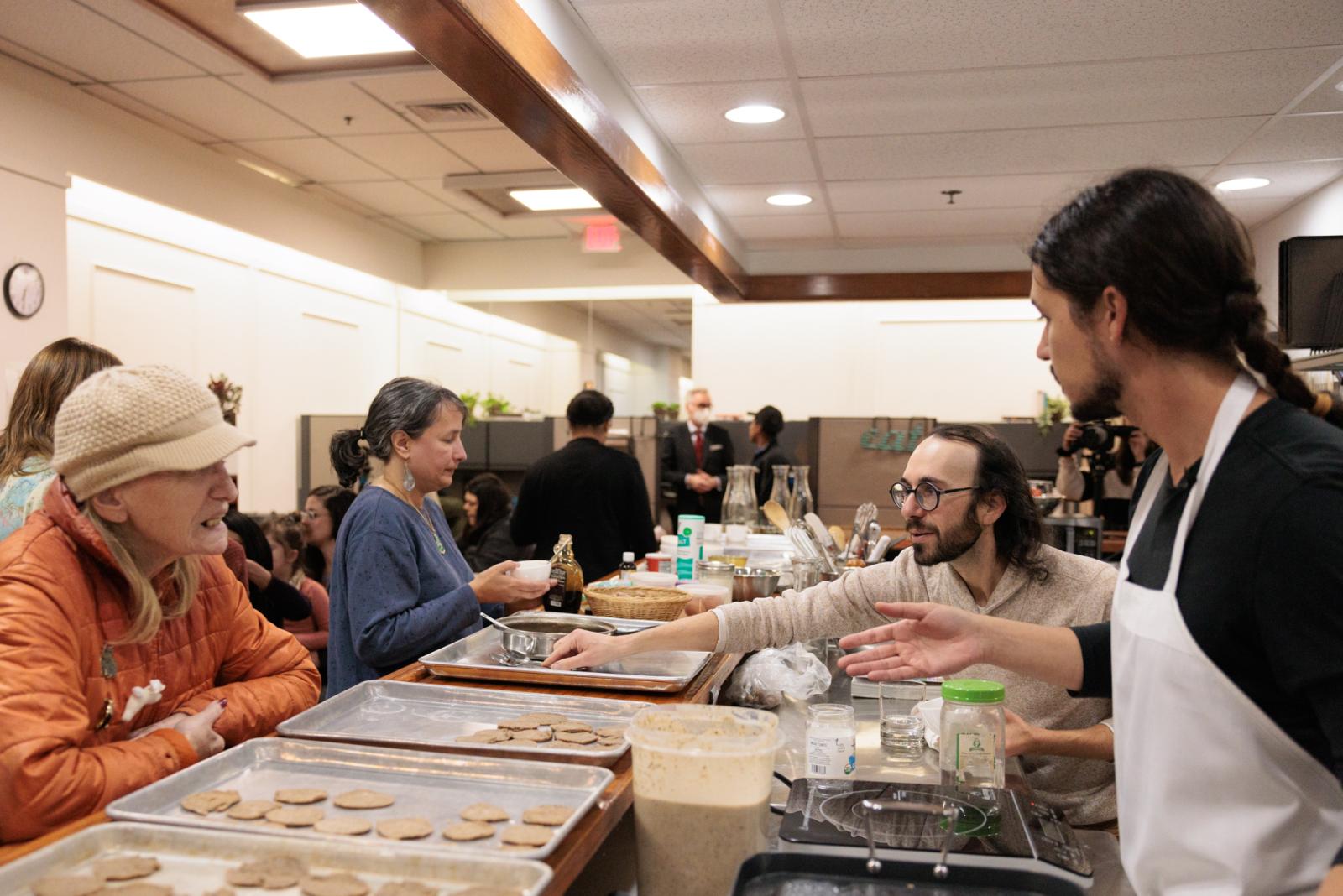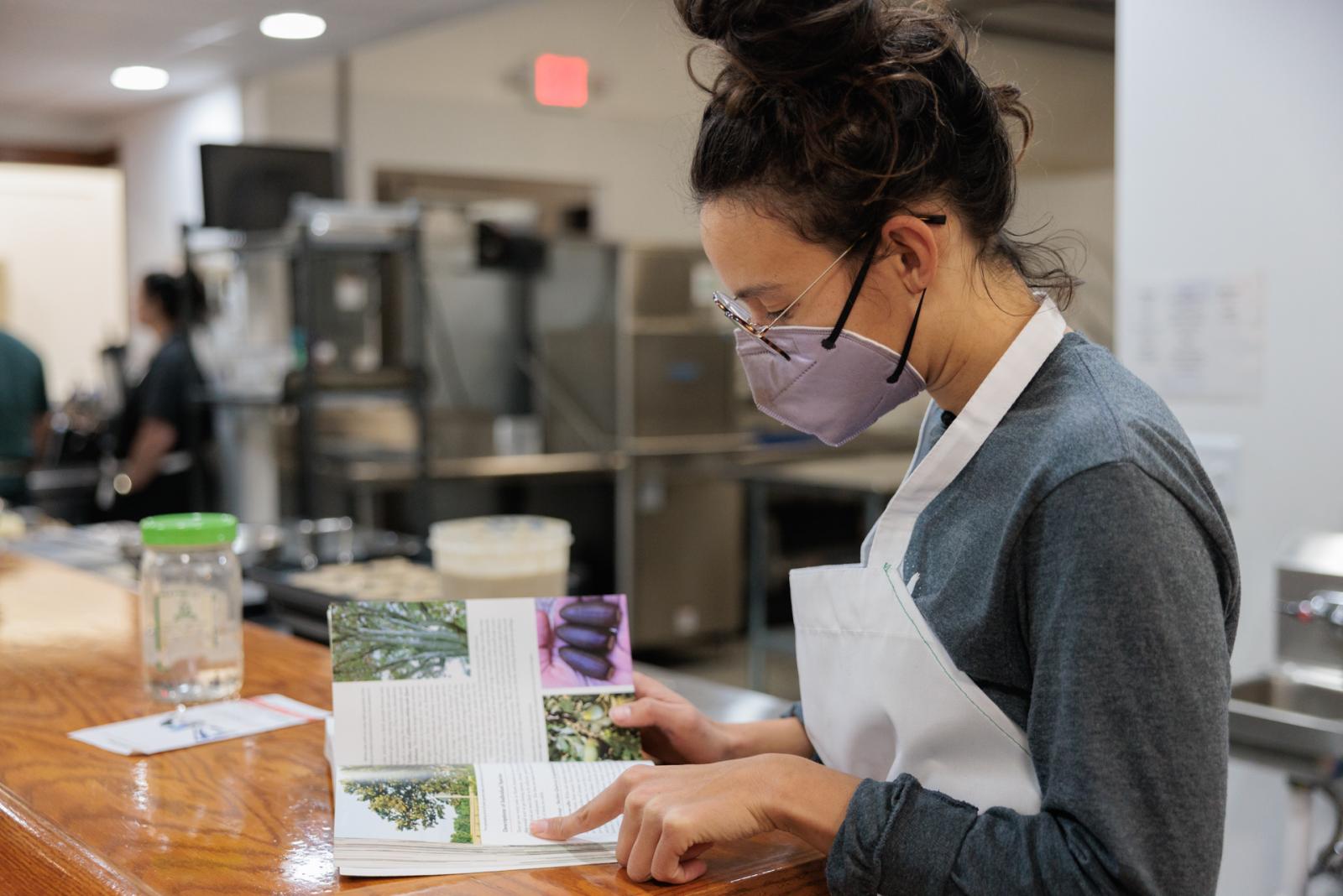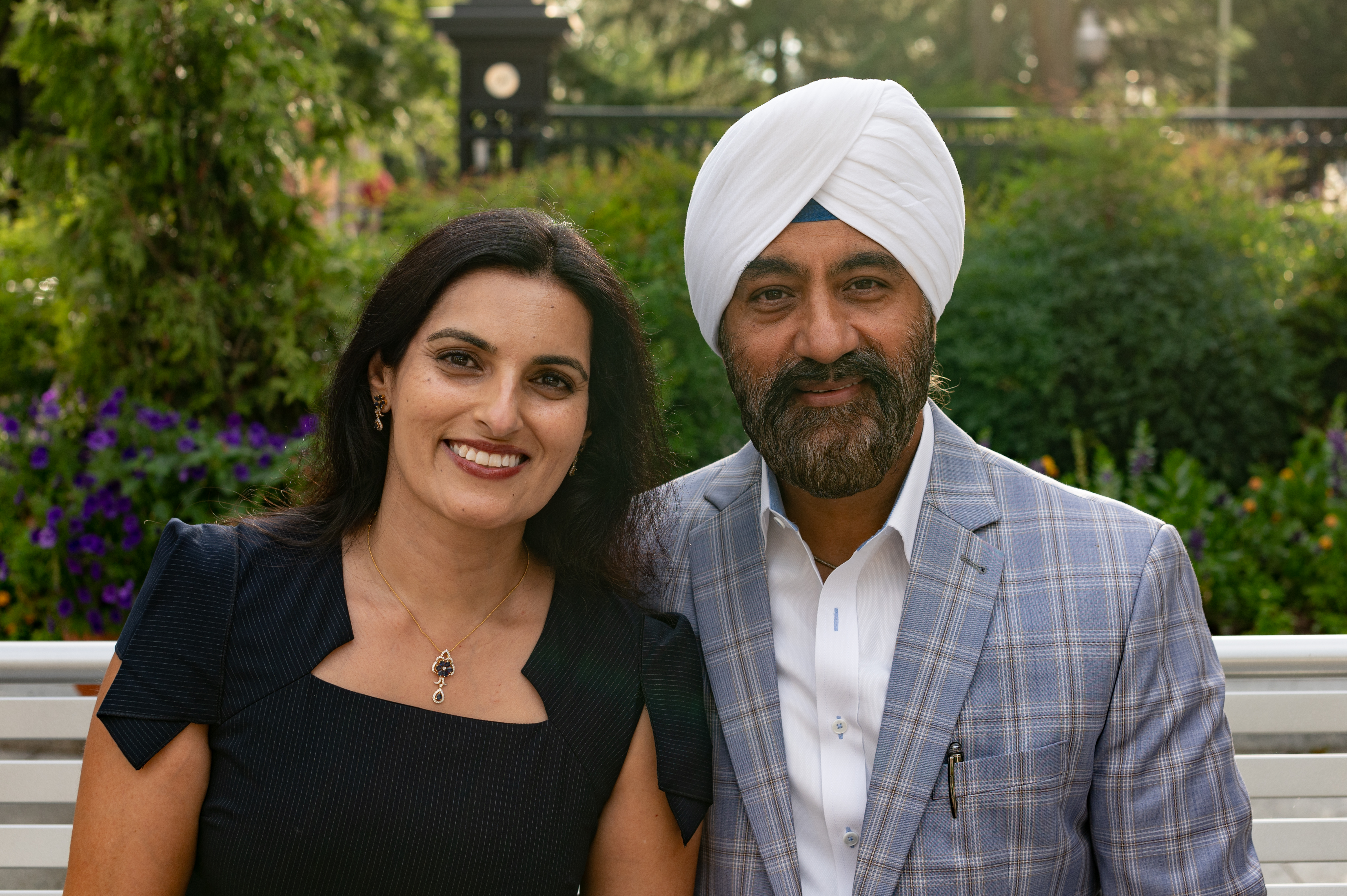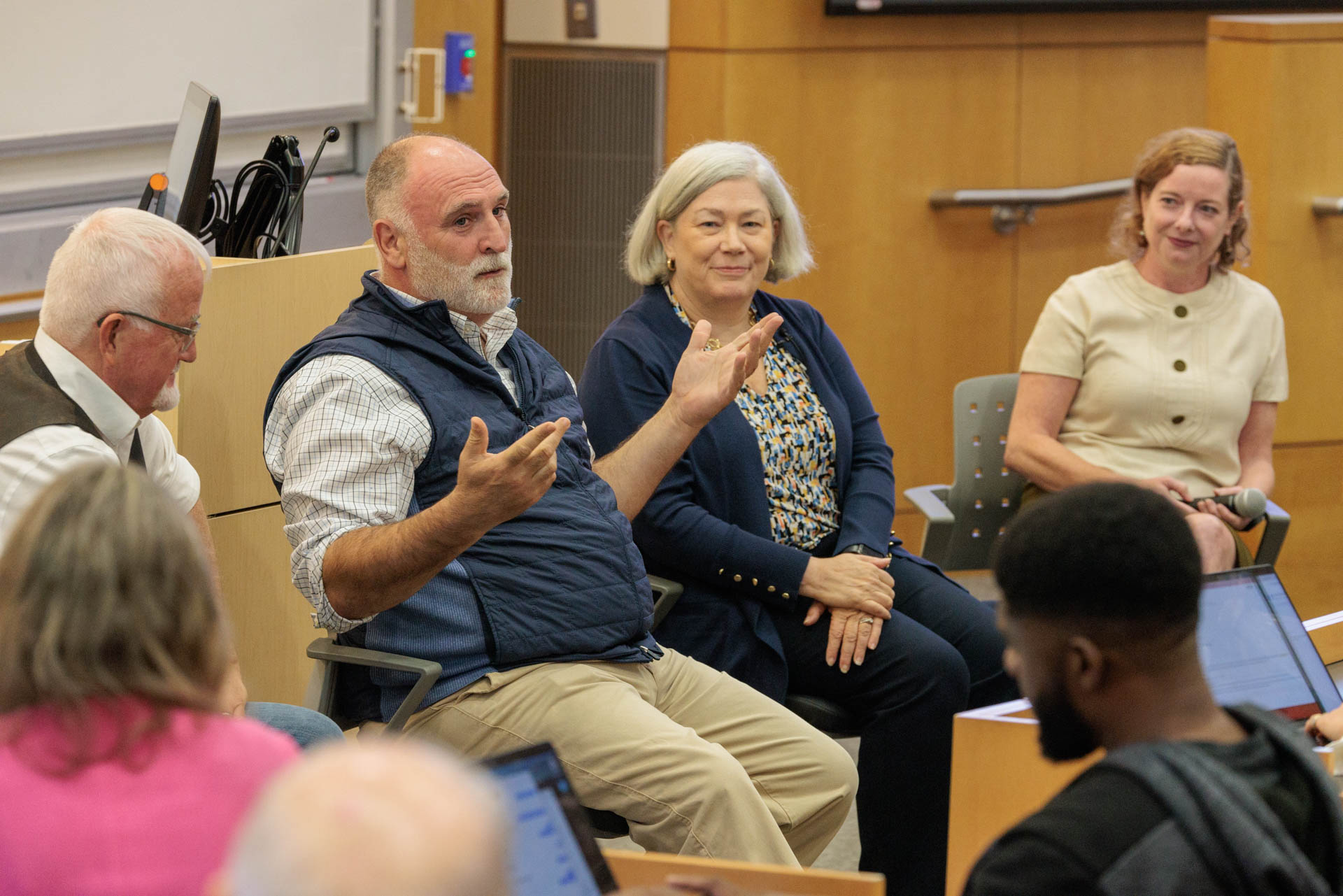Acorns have been providing nutrition for millennia for cultures around the world, including Indigenous peoples in North America. This year has been a mast year for oak trees, meaning the acorn harvest was at its most abundant. Scientists have only theories to account for the irregular mast year cycle, which may or may not have something to do with climate or other factors such as insect predation. Whatever explains the bountiful yield, do-it-yourselfers who forage for their own acorns exulted in the bumper crop.
There are 17 varieties of acorns found on the Foggy Bottom campus at the George Washington University, according to Shawn Shafner, an artist working on his M.F.A. in social practice at the Corcoran School of the Arts and Design within the Columbian College of Arts and Sciences. For his project Acornucopia!, Shafner has collected many of them, but hardly made a dent in the overall quantity of acorns on the ground.
“There are not a lot of hungry squirrels on campus because of me,” Shafner said, “and I probably collected more than a thousand acorns.”
For his wide-ranging Acornucopia! project, Shafner has created several events, as well as an installation in Smith Gallery 102. On the evening of Nov. 29, in the Seva Teaching Kitchen, home to the Culinary Medicine Program of the GW School of Medicine and Health Sciences, there was a tasting event and panel titled “Acorns: Forest to Food.” Panelists included Zí Proctor, a Piscataway farmer and stewardship coordinator for the Accokeek Foundation at Piscataway Park; Bodhi Vasilopoulos, forest gardener, forager and educator; Caleb Jang and Roren Choi, owners of the Korean-American culinary venture Magpie and the Tiger; and Alexis Dickerson, a community conservationist from Potomac Conservancy’s Tomorrow’s Trees.
Guests at the event were served acorn coffee, pancakes made from acorn flour and dotori-muk, a popular Korean dish made from acorn starch. Jang and Choi flavored their dotori-muk with a blend of soy sauce, sesame oil, ginger and Korean chili flakes. Both the dotori-muk and the pancakes pleased tasters.
The event was introduced by Timothy Harlan, associate professor in SMHS and director of the Culinary Medicine Program. At the Seva Teaching Kitchen, Harlan said, “We teach medical students how to cook and ways they can help patients eat healthy.” Encouraging people to sign up for cooking classes, Harlan noted that the courses are taught at no charge to community members.
Shafner first got interested in the culinary aspects of acorns by reading Octavia Butler’s sci-fi novel “Parable of the Sower,” set in a post-apocalyptic time when people need to relearn forgotten skills of living with nature.
“I knew that I wanted to be working in solidarity with, and learning from, Indigenous peoples and elders,” Shafner said, “because I do believe we’re in a time of climate crisis and technological breakdown. I think that we have to go back to things we once knew, but forgot.”
Acorns are much more than simply things that we step on, that clog our gutters and dent our cars, he said. They’re a nutritional powerhouse that’s free and available to anyone with the time and know-how to use them.
“We think food has to come from the grocery store,” Shafner said, “but actually, it’s falling all around you, and it’s abundant, in a city where many people are hungry and where we feel very little connection to our food. That sort of psychic connection is really where it's at for me.”
Vasilopoulos and other panelists agreed, noting that apart from being plentiful, acorns are nutritious and not sprayed with toxic chemicals.
“They’re not just food for squirrels and chipmunks,” Vasilopoulos said. “When colonizers and settlers came here hundreds of years ago, they didn’t know that the entire continent was actually being farmed. The entire continent is a food forest still to this day. Along the Anacostia River, you still see hickories, groundnut, persimmon, pawpaw—all these plants that are still there because of the stewardship from communities that would travel and spread these plants around.”
If there’s a downside to acorns, it’s that they’re highly labor-intensive, requiring time and effort to gather and grind (after leaching to remove tannins, which taste bitter and can ride roughshod on the human digestive system). For many people, the acorn’s nutritional value and abundant supply may compensate for the effort.
In some traditional communities, Dickerson said, acorns would be gathered in a basket and left in a running stream for a few days to drain the tannins—harder to manage, she acknowledged, in a polluted environment.
Still, Dickerson said, acorns are “a rich source of proteins and carbohydrates and fats. It’s a really complete food source and something that you can process one time and then store for a good amount of time.”
Traditionally, Proctor said, Indigenous people would lessen the workload by working in community to harvest, leach and grind acorns—and the process of doing the work, Proctor added, strengthens our connection to the food we eat.
“I have a love for food that grows on my homeland,” Proctor said. “I really look forward to people empowering themselves and building food security by harvesting what is already available to us and not having to be sold everything. It creates an accessibility barrier when you have to make money to go out and buy things. Acorns are here, and they’re available.”
They’re also an extremely safe food for beginning foragers.
“Everyone’s scared to go mushroom hunting,” Shafner said. “Like, am I going to nourish myself? Am I going to die? Am I going to have a psychedelic experience? Am I just going to vomit and then move on with my life? But if it looks like an acorn, it’s an acorn. So that makes it a very accessible food.”
At the evening’s conclusion, Shafner thanked his panelists as well as Tara Scully, José Andrés and the Global Food Institute at GW for supporting the event.
ACORN PANCAKE RECIPE
Apart from a griddle or pan, here is everything you need to make acorn pancakes.
1.5 cups flour (3/4 cup acorn flour and 3/4 cup all-purpose flour)
3 tablespoons sugar
1.5 teaspoon baking powder
0.5 teaspoon salt
1.5 cups milk
2 eggs
1 teaspoon vanilla
3 tablespoons butter, melted (or another oil)
maple syrup to taste
For more information about Acornucopia! and related events, click on the link. The larger Acornucopia! exhibit is on view in Smith Gallery 102 through Dec. 2 (complete details and viewing hours here).
“(Up)Root(ed)”: Uplifting Native Ecology and Indigenous Visibility on Campus will be on view at the Corcoran’s Flagg Building Dec. 6–12 from 1–5 p.m. There will be a special event on Friday, Dec. 8, at noon in the Flagg Building Atrium, when visitors can learn about the history and ecology of the Piscataway people who were original inhabitants of the region surrounding GW.


